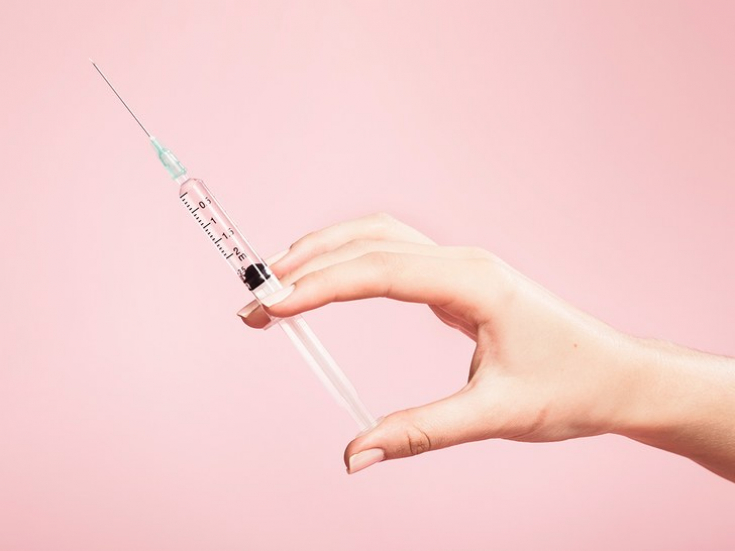The quality of the result, the duration of the effect and the safety of the patient after rhinoplasty with fillers depend both on the skill and knowledge of the cosmetologist, and on the correct choice of the drug for this procedure. What types of dermal fillers are used to correct the shape of the nose, what properties should an ideal filler for injectable rhinoplasty have and whether it exists on the market of aesthetic medicine, in this article estet-portal.com tells Dr. Amy Milletp (Amy Miller).
- Types of fillers that are used to correct the shape of the nose
- What properties should I pay attention to when choosing a filler for rhinoplasty
- Ideal filler for injectable rhinoplasty – what is he
- Use of autologous fat for injectable rhinoplasty
Types of fillers that are used to correct the shape of the nose
The most popular fillers for rhinoplasty are preparations based on hyaluronic acid and calcium hydroxyapatite. Both substances are subject to natural degradation in the body and, accordingly, the results of their use are not permanent.
An added benefit of HA fillers – reversibility of the result and the ability to quickly respond in the case of intravascular administration of the drug.
The most popular fillers for rhinoplasty are preparations based on hyaluronic acid and calcium hydroxyapatite.
Autologous fat, polymethacrylate and silicone are used much less often for nose correction. All these substances are permanent to some extent, and therefore, according to the author, their use can only be resorted to after a "trial" test. rhinoplasty with biodegradable fillers.
Injection rhinoplasty: why it is important to measure the proportions
What properties should I pay attention to when choosing a filler for rhinoplasty
When choosing a filler for rhinoplasty, it is important to pay attention to its rheological properties:
1. Elasticity coefficient (G’), which measures the ability of a product to resist deformation under pressure.
G’ increases as the degree of cross-linking of HA molecules increases and can be considered as a measure of gel density. Fillers with a higher G’ can more effectively withstand the dynamic forces during the work of the facial muscles, thereby providing a more pronounced lifting effect and a long lasting effect. However, such materials can be denser, inhomogeneous and injure tissues more, which leads to pain, inflammation and swelling.
2. Viscosity (n*) – the ability of the gel to resist shear forces.
– the ability of the gel to resist shear forces.
Fillers with high viscosity hold their position better, providing better correction accuracy. Such products spread less into the surrounding tissues and provide more predictable results.
3. Hydrophilicity
– not a rheological, but important property of the filler, which determines the ability of the material to bind water.
Native HA molecules bind large amounts of water and help the skin maintain elasticity and firmness. Hyaluronic acid in the filler has a similar property, the degree of which manufacturers set depending on the purpose of the product.
Injection rhinoplasty: practical tips and techniques for nose correction with fillers
In many cases, high hydrophilicity plays into the hands of the practitioner, especially when it is necessary to volumize one or another area, such as lips. However, products that do not absorb large amounts of water are better suited for nose correction – in this case, tissue deformation will be less, and the risk of vascular compression as a result of swelling – below.
4. The presence of lidocaine in the
Lidocaine in the filler affects its fluidity, elasticity and viscosity. Wang and Friedman argue that G’ and n* are directly proportional to the material concentration. That's why, by reducing the concentration of the main substance of the filler by adding lidocaine, we reduce its viscosity and elasticity coefficient. This allows you to "customize" product for specific purposes.
Ideal filler for injectable rhinoplasty – what is he
can be called a product with minimal hydrophilicity, high coefficient of elasticity (G’) and high viscosity (n*), the results of which are reversible.
Harmonization of the facial profile: non-surgical rhinoplasty technique
To date, there are no drugs that meet all of the above criteria. The closest to them are fillers based on calcium hydroxyapatite, however, their degradation is possible only in a natural way. Despite this, many specialists choose this type of filler, including because of the longer stay in the tissues.
The ideal filler for injectable rhinoplasty can be called a product with minimal hydrophilicity, high coefficient of elasticity (G’) and high viscosity (n*), the results of which are reversible.
Use of autologous fat for injectable rhinoplasty
, the material is centrifuged and prepared for injection. Survival of fat grafts varies, and there is a certain degree of absorption of the material, which necessitates repeated procedures.
Read us on Telegram!
According to various studies, after 1–3 procedures, the degree of graft engraftment ranges from 44.5% to <50%. In other studies, patient satisfaction was > 80%, but the degree of graft engraftment was not determined. From this it follows that the satisfaction of patients, in addition to the volume of engrafted material, other factors also influence. This is an interesting topic for further research.
Adapted from Prime magazine.
Watch us on YouTube:







Add a comment